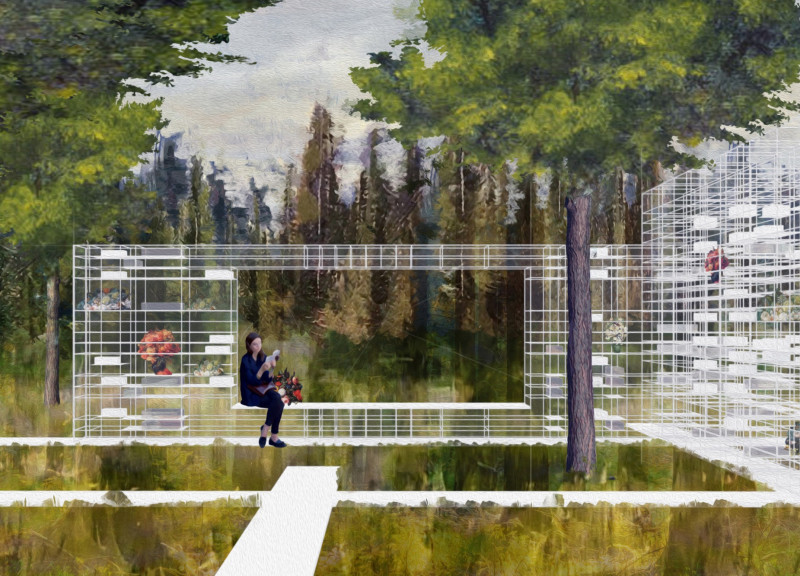5 key facts about this project
The Memory Museum is a thoughtful space located in Latvia, created to honor those who have passed away. It focuses on the idea of remembrance and how it connects the living with the memories of the departed. The design fits seamlessly into the natural surroundings, providing an environment that encourages reflection and connection.
Filigree Structure
At the heart of the design is a filigree structure, which serves multiple purposes. It holds urns and provides spaces where visitors can leave mementos and offerings. This design choice emphasizes the importance of personal artifacts, allowing individual stories to interact within a larger context. The museum's layout is non-hierarchical, inviting visitors to wander freely and explore the memories contained within.
Permeable Walls
The walls of the structure are open and porous, creating a link between the inside and outside. They allow light to enter, making the space feel warm and inviting. This design choice fosters a sense of calm. Visitors can find solace inside while still being aware of the beauty of the surrounding landscape. The permeability of the walls enhances the overall experience, promoting reflection on both personal and shared memories.
Design for Reflection
Openings throughout the building create areas for pause and contemplation. These spaces encourage visitors to take a moment to think deeply about their experiences and the memories they hold. The openings serve as visual connections to the world outside, reminding visitors of their relationship with nature. This thoughtful arrangement enriches the act of remembrance, helping to create a personal and communal atmosphere.
Visitors are encouraged to discover mementos left by others, which adds layers to their own perceptions of memory. The experience becomes a shared journey, where individual stories blend together in a meaningful way. The design of the Memory Museum fosters a tranquil yet engaging environment. It stands as a space for honoring lives and preserving legacies, allowing visitors to both remember and reflect.

























































